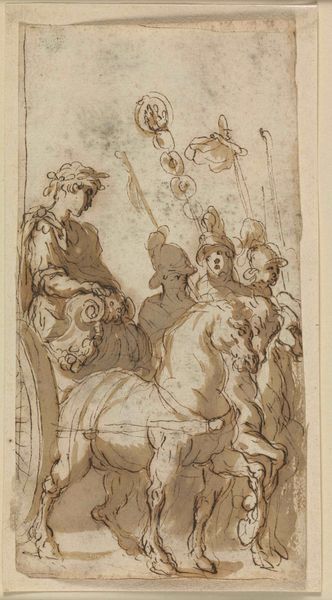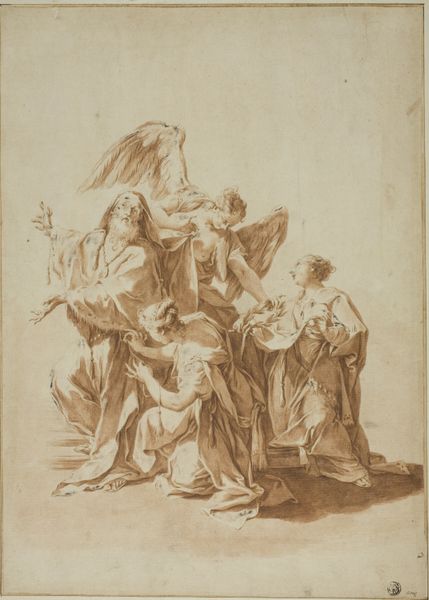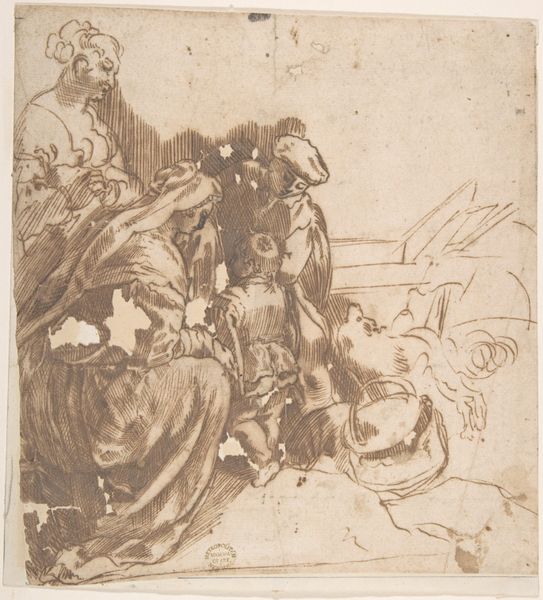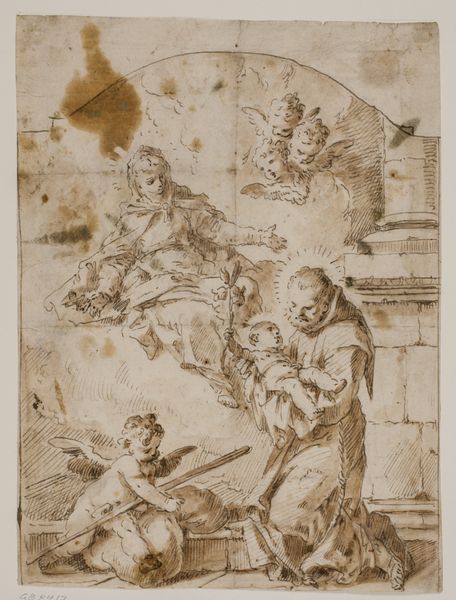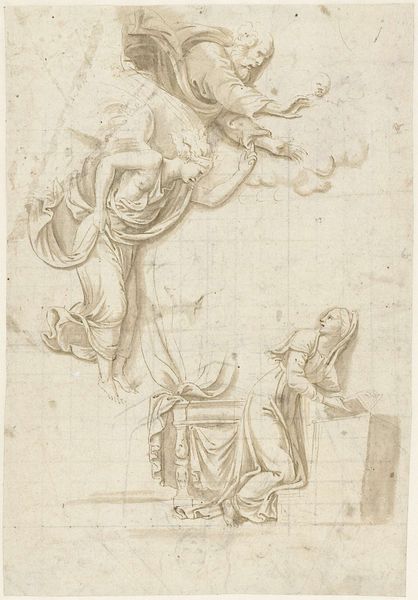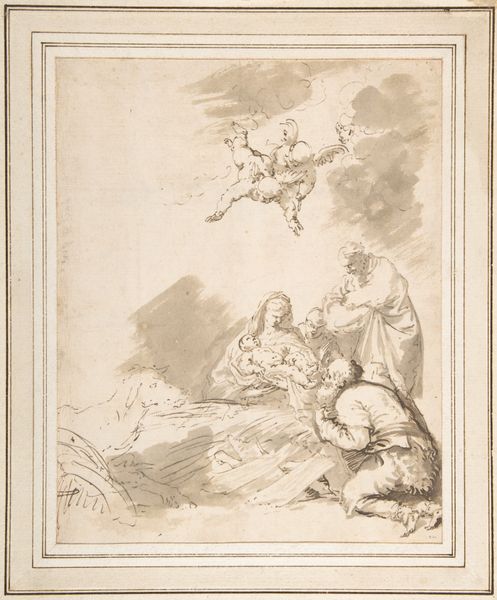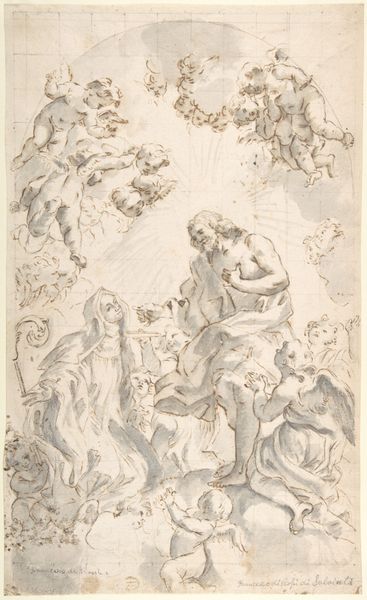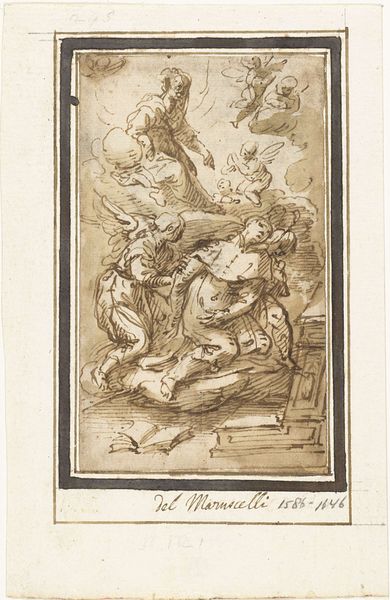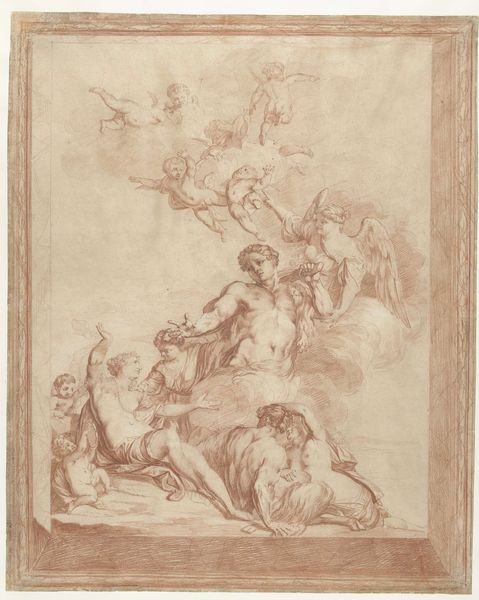
drawing, pen
#
drawing
#
baroque
#
figuration
#
pen
Copyright: Public Domain
Curator: Here we have "Maria von Engeln getragen erscheint einem knienden Bischof," an intriguing pen and ink drawing housed here at the Städel Museum, by Alessandro Tiarini. Editor: There’s a dreamlike quality to this piece. The lines are soft, almost hesitant, giving it a very ethereal, and dare I say, devotional atmosphere. The light seems to be emanating from the figures above. Curator: Precisely. The scene is a Marian apparition, Mary supported by angels appearing before a kneeling bishop. Note how Tiarini renders the scene in the Baroque style, full of emotion and dynamic movement despite being a pen sketch. What meanings and impact might it have conveyed in its historical context? Editor: For me, the prostrate bishop, with Mary appearing above surrounded by these almost plump, angelic figures, reinforces a very particular power dynamic of the Church, wouldn't you say? Mary here reinforces hierarchical religious structure, sanctifying a masculine authority figure at the expense of her own individual agency, sadly. Curator: That’s a valid point when looked at through the lens of today's sensibilities, and the male-centric framing would feel natural to Tiarini, as we understand this image carries with it much embedded iconography. Notice Mary's open arms. That is a symbol of grace and protection. Consider also the cherubs bearing her weight, figures of innocence and divine messengers from what may have been seen as another realm of time and space. Editor: Yes, and it's these very traditional symbolic registers that can still affect its reading today, don't you think? That traditional portrayal can become something oppressive within contemporary sensibilities. Curator: I would contend this also evokes comfort for many. The idea of heavenly intervention and divine grace in times of trouble is something deeply embedded in the cultural psyche, and here that imagery appears vivid and hopeful. This image seems frozen in that hope, almost outside of time, even for us today. Editor: Ultimately, I think analyzing artworks like these becomes a crucial avenue through which we question both the cultural legacy, and continuing social function, of symbolic structures which still inform the experience of a lot of people. Curator: It does indeed become part of our collective symbolic archive, constantly reshaped by us and, in return, shaping our view of the past and the present. It carries, generation to generation, this cultural weight which reveals subtle differences over time.
Comments
No comments
Be the first to comment and join the conversation on the ultimate creative platform.
